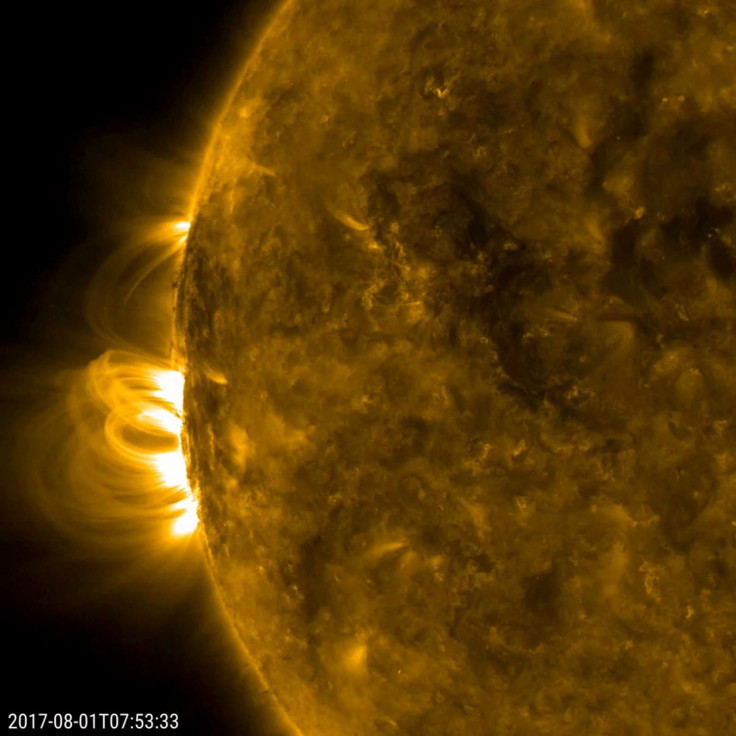Earth Gets Hit By Slow Coronal Mass Ejection Emitted By The Sun
KEY POINTS
- A CME from the Sun recently hit Earth
- The CME that hit the planet on Monday caused a weak impact
- Strong CMEs can cause geomagnetic storms
Earth was recently hit by a coronal mass ejection (CME) emitted by the Sun. Fortunately, the solar emission only caused a weak impact and did not trigger a geomagnetic storm.
CMEs contain plasma and magnetic field escaping from the Sun’s atmosphere, which is known as the corona. They are known to travel away from the Sun at high speeds ranging from 250 to 300 kilometers per second.
Recently, Earth was hit by a slow-moving CME. The recent cosmic weather event was confirmed by forecasting site SpaceWeather.com. According to the site, the CME left the surface of the Sun last Wednesday. Based on the data collected by the site, the CME struck Earth’s atmosphere on Monday.
Fortunately, the CME that recently hit Earth was not moving very fast. As a result, its interaction with the planet’s magnetic field did not trigger a geomagnetic storm. Instead, it only led to the appearance of auroras or polar lights over the U.S.-Canada border.
As explained by the National Oceanic and Atmospheric Administration’s Space Weather Prediction Center (SWPC), fast-moving CMEs could cause geomagnetic storms on Earth if they hit the planet.
These storms occur as the highly charged plasma and particles within the CMEs disrupt the Earth’s magnetic field. These disruptions could reach Earth’s ionosphere, which is the layer of Earth’s atmosphere that contains high concentrations of ions and free electrons.
Disruptions in the ionosphere could cause energetic particles to disrupt facilities and equipment on Earth that rely on electricity and radio frequency. This means that during severe geomagnetic storms, parts of the planet may experience widespread blackouts and lack of radio communication.
In addition, a geomagnetic storm could also affect the operations of satellites in low Earth orbit and those of navigation systems.
“The local heating also creates strong horizontal variations in the in the ionospheric density that can modify the path of radio signals and create errors in the positioning information provided by GPS,” the SWPC explained.
“While the storms create beautiful aurora, they also can disrupt navigation systems such as the Global Navigation Satellite System and create harmful geomagnetic induced currents in the power grid and pipelines,” the agency added.

© Copyright IBTimes 2024. All rights reserved.





















